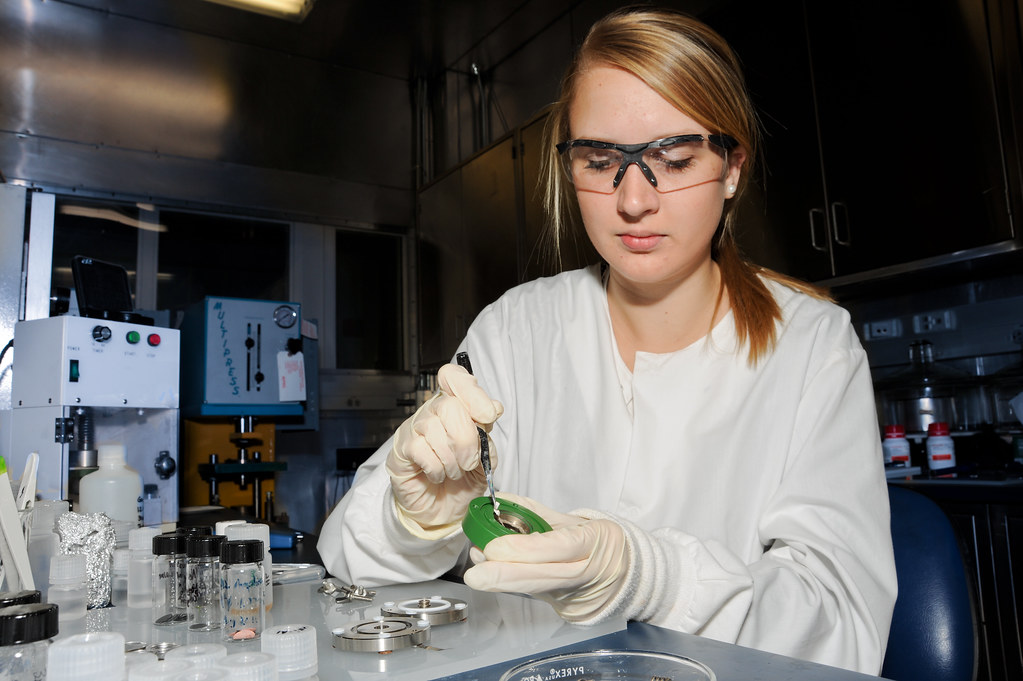Sian Wilcox
March marks Women’s History Month, a time to celebrate the achievements of women. We hear of fantastic women from history and the present day, and the huge impact they have had in advancing our society. An ever-present theme to these stories, however, is that of constant barriers and setbacks that these women continue to face. Much work has been done to address these barriers but many fields remain largely male dominated.
As a woman working in a scientific field, I have witnessed this gender gap first hand, and it comes as no surprise that the statistics support this. A report by the UN Educational, Scientific and Cultural Organization found that less than 30% of researchers worldwide are women1, whilst a government report found that only 17% of STEM professors are women2. The statistics become even more bleak when there is an intersection between one or more marginalised identity.
Some may wonder why this disparity exists; wasn’t gender equality realised decades ago? There is some truth in that gender equality in sciences has improved, but this does not negate the fact that for the majority of the field’s history, women have been actively excluded. It is not enough for women to simply be allowed into these fields when it is not built for them: it is difficult to gain access, and difficult to stay once you are in.
In an attempt to address the stark gender gap, outreach programmes have focused on getting young girls interested in STEM subjects. Whilst these initiatives have helped to increase the number of girls pursuing science up to degree level, beyond this point very little work is done to retain women. This is most pronounced when looking at the retention rate of women in STEM fields, in which women are far more likely to leave following their undergraduate or doctorate degree than men3. Reasons for this fallout has been attributed to women being made to feel like they do not belong in science, in addition to the long work hours being incompatible with childcare responsibilities (which women are still expected to bear the brunt of). The high attrition rate of women sends the implicit signal that women are not welcome, resulting in lack of representation and so the cycle continues.
Looking back into the not so distant past, there are many examples of women who have had their work blatantly plagiarised, stolen or ignored. A classic example is Rosalind Franklin, whose X-Ray crystallography work was fundamental to the discovery of the structure of DNA. However, she received no credit for the instrumental part she played and instead the discovery was attributed solely to three men4. How can we begin to make women feel valued in sciences when the work done by women still does not receive the recognition it deserves?
The barriers that women in science face are not a modern phenomenon; they are deeply engrained within the field. For example, the ancient Greeks, who contributed heavily to our modern practise of medicine, believed that only men were scientifically interesting, a sentiment that still persists. As a result, our understanding of human biology and physiology has solely been based on men. As said Dr Janine Austin Clayton, the director of the US Office of Research on Women’s Health: “We literally know less about every aspect of female biology compared to male biology”4. The ramifications of this knowledge gap can manifest in some more benign ways; for example, during my undergraduate degree all physiological values we were taught was based on the average person, yet in reality the ‘average’ was referring to a man.
However, a much more dangerous consequence is that health conditions that present differently between sexes are often missed. For example, a 2019 study found that women in Britain are 50% more likely to be misdiagnosed following a heart attack, due to differences in symptoms compared to men6. Further, conditions that predominantly affect women are under researched and poorly understood. Endometriosis is a chronic and painful condition that effects the uterus; despite 1 in 10 women living with this condition it takes an average of 7-8 years for women to be diagnosed with the condition and there is no real treatment available5.
Despite this problem, physiological differences between sexes continue to be overlooked during drug development. Clinical trials are used to test how effective a drug is, the optimal dose to use, and whether it causes any adverse health effects. Shockingly, women only started to be included in trials in the 1990s but 30 years later inclusion of more than one sex is still rare. As a result, any potential sex-differences will remain untested until the drug is on the market which may explain why women are 50-75% more likely to experience serious side effects from medication compared to men7. Further, 8 of the 10 prescription drugs taken off the market by the US Food and Drug Administration between 1997 and 2000 due to severe adverse effects caused greater health risks in women than men8.
Paradoxically, physiological differences between sexes is used as an excuse to exclude female animals from basic research. The reason cited for excluding females is that the monthly hormonal cycle introduces too much variability into the data. This reasoning persists in spite of research demonstrating that there is no scientific basis to this claim9. Moreover, the goal of most research is to eventually translate the findings to humans; therefore, it is important to know whether hormone cycles influence the results considering that ~51% of the human population shares this experience. There has been a recent push to increase the usage of female animals in research with some funding organisations not approving grants if only males are going to be used. However, publications show that inclusion of females is far from mainstream, with 5.5 research papers using only males for every 1 paper that includes females10.
All of this should not detract from the immense progress that has been made towards equality, and I am by no means saying that we should not be pausing to celebrate women in science. It is simply a reminder that there is a lot more work that needs to be done at a fundamental level in order to address these deep-rooted issues. Hopefully, in time, science will uplift women and their voices every month of the year, not just in March.
References
- UN Educational, Scientific and Cultural Organization. http://uis.unesco.org/en/topic/women-science (Accessed Mar 18, 2021)
- Pain. (2014). More action needed to retain women in science, Science
- Sheltzer and Smith (2014). Elite male faculty in the life sciences employ fewer women. PNAS 111, 10107-10112
- Conlon, 2020. Rosalind Franklin. New Scientist https://institutions.newscientist.com/people/rosalind-franklin/ (Accessed Mar 19, 2021)
- Pugsley, Z. (2007). Management of endometriosis in general practice: the pathway to diagnosis. British Journal of General Practice 57, 470-476
- Ferry A.V. et al. (2019). Presenting symptoms in men and women diagnosed with myocardial infarction using sex‐specific criteria. Journal of the American Heart Association, 8
- Whitley H. Lindsey W. (2009). Sex-based differences in drug activity. American Family Physician. 80, 1254-1258.
- Carey J. L. et al. (2017). Drugs and Medical Devices: Adverse Events and the Impact on Women’s Health. Clinical therapeutics, 39, 10–22
- Beery A. K. (2018). Inclusion of females does not increase variability in rodent research studies. Current Opinion in Behavioral Sciences, 23, 143–149
- Beery A. K. and Zucker I. (2011). Sex bias in neuroscience and biomedical research. Neuroscience and Biobehavioral Reviews, 35, 565–572
Sian Wilcoxphoto credit: “Army scientists energize battery research” by U.S. Army Combat Capabilities Development Command is licensed under CC BY-SA 2.0





